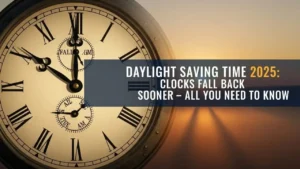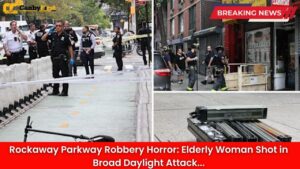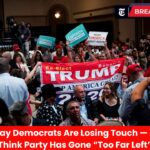New York, US: A heated scene unfolded at a Manhattan art studio this week when a New York City artist, known for his provocative installation centered around the Hamas-Israel conflict, erupted in anger after being asked a simple question about his controversial piece. Witnesses described the outburst as “unhinged,” sparking fresh debate over the intersection of politics, free speech, and art.
Artist’s Exhibit Sparks Controversy
The artist, whose installation drew attention for its unapologetically pro-Hamas tone and incendiary symbolism, reportedly intended the piece to serve as a “mirror to world hypocrisy.” Displayed at a downtown gallery, the installation featured war imagery, militant insignias, and distorted media headlines — a combination that left many confused about whether it was a critique or celebration of extremist behavior.
The controversy intensified when a passerby, identified only as a local journalist, calmly asked the artist whether he believed his work glorified violence. Instead of offering clarification, the artist allegedly shouted, “Get the f—k away from me,” before storming off and ending the impromptu interview. Onlookers said the verbal explosion was so aggressive that gallery staff had to intervene.
Also Read
Eyewitness Accounts
According to those present, the confrontation grew tense almost immediately. “He was pacing, clearly irritated from the start,” shared a bystander. “When the question came, it was like lighting a fuse. He snapped — completely lost it.”
Other visitors described the artist’s demeanor as defensive and erratic, suggesting he may have anticipated backlash. “It felt like he wanted controversy but couldn’t stomach being challenged,” another observer noted.
The Dividing Line Between Expression and Extremism
The outburst reignited discussions across New York’s creative community about artists pushing boundaries in politically charged times. Supporters of the installation defended it as a bold act of protest art, arguing that the display exposes Western bias and humanizes the Palestinian struggle. Critics, however, say it crosses a moral line by appearing to glorify a group internationally recognized as a terrorist organization.
Art critics across the city weighed in on social media, questioning whether genuine artistic message remains intact when outrage eclipses the art itself. “Freedom of expression doesn’t absolve responsibility,” one curator wrote, calling the artist’s behavior “a symptom of performative rage disguised as activism.”
Public Reaction and Social Backlash
The confrontation quickly spread online after snippets of the artist’s outburst were shared through short videos. Within hours, the footage went viral, prompting hundreds of comments ranging from empathy to outrage. Many accused the artist of moral hypocrisy — urging discourse through art but reacting violently to simple inquiry.
Some art enthusiasts called for the gallery to withdraw the installation, while others demanded greater context behind the artist’s intent. The gallery management has yet to issue an official statement but confirmed the incident disrupted the day’s scheduled walkthroughs.
A Broader Reflection of Polarization
Observers see this episode as more than just an artist’s bad day. It underscores the nation’s growing discomfort when art merges directly with real-world conflict narratives. New York, often considered the capital of avant-garde expression, now finds itself at the crossroads of political art and public accountability.
Sociocultural analysts argue that such incidents reveal the emotional volatility surrounding international conflicts and their portrayal in Western art spaces. “Artists are expected to provoke thought,” said one cultural critic, “but the moment they exhibit hostility toward questioning, they lose the very dialogue they claim to pursue.”
Artistic Freedom Under Scrutiny
This isn’t the first time a politically charged installation has caused turmoil in the city’s art circles. Similar controversies in the past revolved around works touching on war, race, and religion. However, this event appears to resonate more deeply due to the ongoing global tension surrounding the Middle East conflict and recent extremist violence.
As debate swirls, the incident raises questions about boundaries — where personal conviction ends and public responsibility begins. Freedom in expression remains a cherished right, but when that expression edges into glorification of terror or hate, the distinction between message and menace becomes dangerously thin.
Gallery’s Next Step
Following the altercation, security at the gallery was briefly heightened. Exhibitors reportedly removed certain symbolic props that could be deemed inflammatory. Plans for future artist panels or discussions on the subject have been placed on hold pending further review by curators and organizers.
The gallery owner privately acknowledged that the controversy has brought an unexpected spotlight to an otherwise obscure installation. “We believe in open dialogue through art,” the owner said, “but public safety and responsible representation must come first.”
Conclusion
The confrontation between the Hamas-focused artist and a journalist serves as a stark example of how volatile the marriage between political art and personal ideology can become. In an era where creative expression often doubles as activism, the line between passionate advocacy and uncontrolled anger grows thinner by the day.
As New York’s art world continues to grapple with questions of free speech, accountability, and moral responsibility, one thing seems certain — art intended to start a conversation should never end it with rage.












